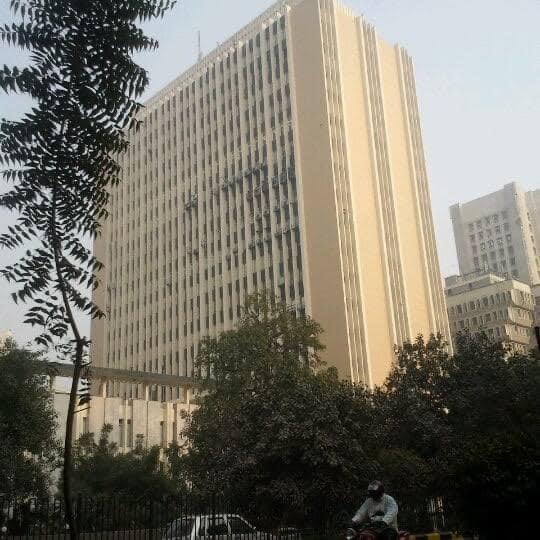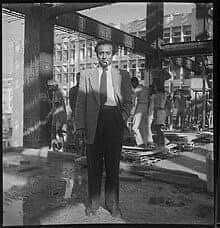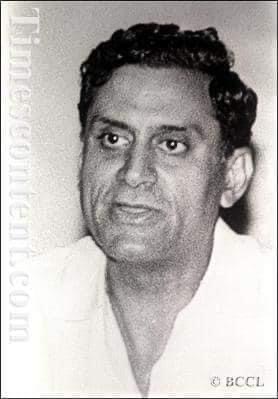अब ये साउथ दिल्ली की एक बिल्डिंग से प्रकाशित होगा! पढ़ें वरिष्ठ पत्रकार विवेक शुक्ला जी का ये शानदार लेख…
Vivek Shukla-
Today is the last day for Hindustan Times in KG Marg. From now onwards, it would publish from a building in South Delhi. Here is my piece on the making of iconic HT house.
Why HT house is so brilliant
The making of iconic HT house
In the crowd of skyscrapers all around, some buildings stand out thanks to their innovative design and lovely look. The 18 storied Hindustan Times House on Kasturba Gandhi Marg looks regal and a modern building even after half century of its construction. It was constructed in 1974 and all the HT offices moved here by the end of 1975. Before that HT and its sister publications were published from the Bombay Life Building in Connaught Place. That building is still there and standing tall.
Actually, the 18-20 Kasturba Gandhi Marg, was the residence of Lala Shankar Lal, the younger brother of Lala Shri Ram, the founder of the DCM group. As a connoisseur of Art and Music, Lala Shankar Lal used to host private mehfils in his sprawling house. The likes of Pt. Ravi Shankar, Ustad Bade Ghulam Ali Khan, Begum Akhtar had mesmerised their audience there. Of course, the elite of Delhi used to attend those private mehfils.
However, Lala Shankar Lal sold his house to Birla family in 1960s for some unknown reasons. It had one deep well and several mango trees. Till then, the whole area was dotted with Raj days’ built mansions. It was a quiet and serene place. Both Connaught Place and the India Gate were so close to it. Those were the days when Mr. K.K. Birla, the son of Seth GD Birla, the grand old man of Indian corporate world, had started looking after the affairs of Hindustan Times. Mr. Birla had many plans for this prime location property. It is said that after his series of meetings with his trusted managers of HT like Mr G.N. Sahi, the General Manager, and Mr Ram Nandan Sinha, Printer and Publisher of HT, Mr Birla had decided that they should build a modern newspaper building at 18-20 KG Marg. It is worth mentioning here that ace photo journalist of India, S.N. Sinha is the son of Ram Nandan Sinha ji. He had also served as the photo editor of HT for many, many years.
Meanwhile, the cash rich Birla family and HT had enough money to construct the building. The first task before Mr. Birla, Sahi ji and Sinha ji was to find an architect who had a good body of work to show and a contractor who could handle the project effectively. Mr. Birla zeroed on Habib Rahman, an architect with phenomenal work to his credit. Habib Rahman, the man famously known as the architect of independent India has left his imprints on various structures that have been admired by one and all. He was an absolute visionary who brought modernism to India with an ideology that was embedded in every one of the structures, evoking a sense of authenticity and boldness that dictated the surrounding spaces. His buildings kept every passerby riveted with the picture of a developing new India that still had the genesis of its culture and tradition. Habib Rahman had already designed Dak Tar Bhawan, Rabindra Bhawan, Delhi Zoo, AGCR Building and some sectors of RK Puram. Those were the days when equally celebrated architects like Shiv Nath Prasad ( Sri Ram Centre and Akbar Bhawan), Joseph Allen Stein ( Triveni Kala Sangam and India International Centre) and CP Kukreja ( JNU) were also active in capital.
Yet, Birla ji had settled for Rehman. It goes without saying that they would have known each other perhaps due to Rahman’s association with Rajghat project. It was Rahman who had chosen young designer Vanu Bhupa to design Raj Ghat project as he was the head of CPWD. Actually Pt Nehru had entrusted him to find an architect for Rajghat. And Mr. Birla was so close to Gandhi ji since his childhood days.
At the same time, the Sahi- Sinha duo had chosen Uttam Singh Duggal construction company as a contractor of the would be HT House. It was a known contractor firm of Delhi in those days. After Bhoomi Pujan, the construction for the HT house was started in late 1969 in full swing. SN Sinha was there with his father when Bhoomi Pujan took place under the watchful eyes of priests of Birla Mandir.
In HT house, Habib Rahman was creating a master piece with his design principles which were composed of a philosophy that resonated with the Bauhaus style of architecture. What is Bauhaus style of architecture? At its heart, Bauhaus is all about simplicity, but this doesn’t mean that Bauhaus architecture lacks style. Thanks to the clever use and placement of geometric shapes, a clean, unfussy look was achieved that also worked well when applied to mass production and designing functional buildings that were intended for everyone. HT House is a perfect example of simplicity and class.
Once legendary Executive President of HT told me that Mr.Birla had clearly told Habib Rahman that he must design a user friendly building. He wanted comfortable stairs to climb up or down. It has indeed a very comfortable stairs for users. Even senior citizens and pregnant ladies could climb HT House floors without any difficulty. HT House had very spacious stairs on front and back side of the building. Construction of stairs or staircase in a commercial/ residential building is the most necessary component that access flight between one floor to another. On this front nothing to beat HT house. When the spacious offices are only shrinking fast, HT House gives an ample space for all to move around. Alas, such media offices are very few.
And imagine HT house has a big underground parking. It was constructed when India had not even heard of auto revolution. Buying a car was a big deal in those days. Around 150 cars could be parked there. That’s besides the parking it has. I don’t think any building in CP or in Kasturba Gandhi Marg area has so much space for car parking.
Of course, it was the vision of Mr. K.K. Birla who thought of an underground parking in the late 1960s. He was very particular about the cleanliness of HT house. Mr Naresh Mohan also told me that “Birla ji had told us in no uncertain terms that HT house should remain neat and clean like Oberoi Intercontinental Hotel all the time.” He was also involved in the making of HT house since day one. Of course, the words of Mr. Birla were implemented in letter and spirit.
Finally, HT house is so special thanks to the mural. It is out of the world. It makes HT House just brilliant.
Pictures : Mr Habib Rahman, HT house and Naresh Mohan ji.
PS: This is my edited piece that was published in Delhi Press Club magazine couple of years ago.
